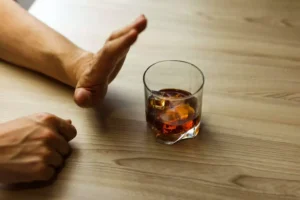
In a study published this spring, people with alcohol use disorder were the least likely to receive prescription naltrexone compared to people with other substance use disorders. Although it’s not a panacea, in hundreds of studies naltrexone has been found to be a safe and effective medication for helping people reduce and stop drinking. The drug, which is classified as an opioid antagonist, was first approved by the Food and Drug Administration to treat alcohol use disorders in 1994—30 years ago. In addition to the pharmacodynamic interactions, pharmacokinetic interactions between alcohol and phenobarbital exist, because alcohol inhibits the medication’s breakdown in the liver. This inhibition results in a slower metabolism and, possibly, higher blood levels of phenobarbital. Conversely, barbiturates increase total cytochrome P450 activity in the liver and accelerate alcohol elimination from the blood (Bode et al. 1979).
Anti-Nausea Medications
- When combined with alcohol some OTC medicines can have serious drug interactions, too.
- In some cases, a fatal overdose can occur if sleep aids are mixed with alcohol because both substances affect the body’s central nervous system (which controls your breathing, heart rate, and brain function).
- With many medications, increased or decreased metabolic rates can have adverse or even fatal consequences.
Most people who consume alcohol, whether in moderate or large quantities, also take medications, at least occasionally. As a result, many people ingest alcohol while a medication is present in their body or vice versa. A large number of medications—both those available only by prescription and those available over the counter (OTC)—have the potential to interact with alcohol. Those interactions can alter the metabolism or activity of the medication and/or alcohol metabolism, resulting in potentially serious medical consequences. For example, the sedative effects of both alcohol and sedative medications can enhance each other (i.e., the effects are additive), thereby seriously impairing a person’s ability to drive or operate other types of machinery.
Herbal medicines and alcohol interactions
Medications that are prescribed to treat nausea can make you feel drowsy, dizzy, and may impair your motor control—symptoms that can also be caused by alcohol. Some drugs (often antihistamines) used to prevent and treat motion sickness can also be purchased over-the-counter. There is a huge amount of stigma against obesity and being overweight, which, like alcohol use disorder, is seen as a failure of willpower rather than a legitimate medical condition.

What Medications Are Used to Treat Alcoholism?
Even though some research suggests that moderate alcohol consumption is heart healthy, certain medications and alcohol have the capacity to interfere with your successful treatment. In people consuming alcohol only occasionally, CYP2E1 metabolizes only a small fraction of the ingested alcohol. Chronic heavy drinking, however, can increase CYP2E1 activity up to tenfold, resulting in a substantial increase in the proportion of alcohol that is metabolized by this enzyme rather than by ADH (figure 3) (Lieber 1994). The effect of lower levels of alcohol consumption on CYP2E1 activity is unknown.
- While these drugs make it less likely your body will form blood clots, they also make you bleed more easily.
- Heavy alcohol use in patients infected with hepatitis C accelerates the rate of liver damage and increases the risk of cirrhosis.
- The reasons they gave her reflected common misconceptions about the drug.
- If you have a medical condition (such as atrial fibrillation) that puts you at risk for developing a blood clot, your doctor might prescribe anticoagulant medications to “thin” your blood.
- This acceleration of alcohol elimination probably does not have any adverse effect.
Although overcoming AUD is a challenging process, medications can help people stay in recovery and prevent them from returning to drinking. Many people have difficulty quitting alcohol use, and medications may make it easier for some people to stick to their treatment plans. Doctors may recommend acamprosate for people in recovery who are no longer drinking. It helps rebalance certain chemicals in the brain and may help a person manage certain withdrawal symptoms. AUD is a chronic and often relapsing disease that may involve compulsive alcohol use, loss of control over drinking, and a negative emotional state when a person is not drinking. Caring for a person who has problems with alcohol can be very stressful.
Marijuana and hallucinogen use among young adults reached all time-high in 2021

Most important, the list does not include all the ingredients in every medication. Always read the label and package insert of any medication you are taking, whether it has been prescribed by your doctor or purchased over-the-counter. If you are not sure if it is safe to drink alcohol while you are Alcohol and Pills taking medication, call a local pharmacy or talk to your doctor about the potential interactions. The risks of mixing antipsychotics and alcohol include impaired judgment, dizziness, drowsiness, low blood pressure, the worsening of a psychiatric condition, an increased risk of suicide, and more.

What Medications Are Available for Alcohol Use Disorder?

No comment